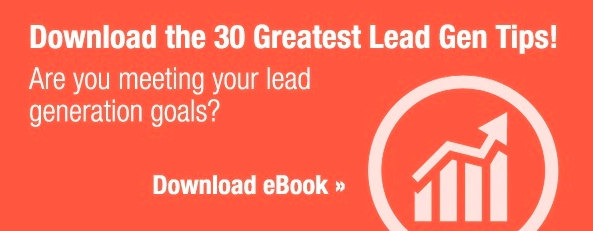The key to a successful buyer persona is simple: know your audience. Companies who create accurate and powerful buyer personas know the door to their customers' very souls. Customers see themselves in an ad or a piece of content and explain, "They get me!" and promptly buy stuff. 
If the term "buyer persona" is a bit cryptic or unfamiliar, fear not: the idea is everywhere and embedded in practically every commercial or ad. It's simply the archetype of what marketers perceive to be their target audience. For example: the quasi-hipster football fan drinking Pepsi, mildly nerdy, plaid-clad professional on a plane with his Microsoft Surface. So how do you create these personas (in four easy steps, no less) and ensure that they drive sales? Read on!
1. Do your homework (and by "homework" we mean "market segmentation.")
The foundational step in creating a buyer persona is to first conduct the market segmentation that will inform the composition of the personas. Sit with your marketing team and start to imagine types of personas based on the following characteristics:
Demographics
- Age
- Gender
- Income
- Education
Purchasing Behavior
- Buying patterns — What product(s) do they buy, and how often?
- Purchasing motives — What makes them buy; is it price point, ease of use, great customer service, etc?
- Goals — Are they looking to save money? Indulge themselves? Buy a gift?
- Content and messaging — What resonates with them the most?
2. Get "under the hood" of your personas (as weird as that may sound.)
Based on this high-level exercise, you can throw around some very high-level personas: the under-35 male with disposable income, the "middle-class" family living on a shoestring, the retired professional. But of course, these personas aren't static; it's important to understand what trends and developments can affect the behaviors of these personas. For example, it's important to look at:
- Current economic trends affecting purchasing behavior. Let's take a "middle-class father of four living on a shoestring." The location is critical in your analysis. States like Nevada, for instance, have been particularly hard-hit in the housing crisis; they're just barely trying to stay afloat and probably lack the disposable income. However, if you're selling, home solar panels, they'll appreciate the cost savings from the investment. Compare that to a family living in a more temperate climate: a better sales approach may be the "eco-friendly" aspect of solar panels.
- Internal customer satisfaction reports and metrics. Buttress your theories with real-life facts and data culled from questionnaires, customer surveys, and customer service rep feedback.
- Social media chatter. Find your customers on social media. Check out their hobbies, interests, and other Likes that can build out the persona.
3. Bring your personas to life — visually and characteristically.
This is where the rubber meets the road. Based on your analysis, actually create the personas. Photos are incredibly helpful. Next, write up the basic characteristics of the persona in a fictional story tone. Include:
- Age
- Concerns
- Purchasing drivers
- Information sources
- Preferred channel(s) of communication
- Preferred content
- Purchasing role
- Advocate and influencer
- Key decision-maker
- Established buyer
- Existing user
That last characteristic may be the most important one of them all. And that's because your messaging will change based on their role. For example, if the "advocate and influencer" persona responds well to your product but doesn't ultimately cut the checks, you need to have them up-sell the service to the decision-maker.
4. Have the persona tell their story.
Now your persona is ready for prime time. Obviously these personas will be rolled out across all different kinds of marketing channels, from social media to your Web site. Regardless of the channel, the persona must tell a story. This can be explicit, whereby the persona talks directly to the viewer or the text appears on screen, or implicit, whereby we see the persona doing what they do: cheering for their favorite team, relaxing in their first-class airplane seat, or meticulously picking out kale in the produce section of the supermarket.
Looking for more tips for lead generation? Click the link for 30 more!






